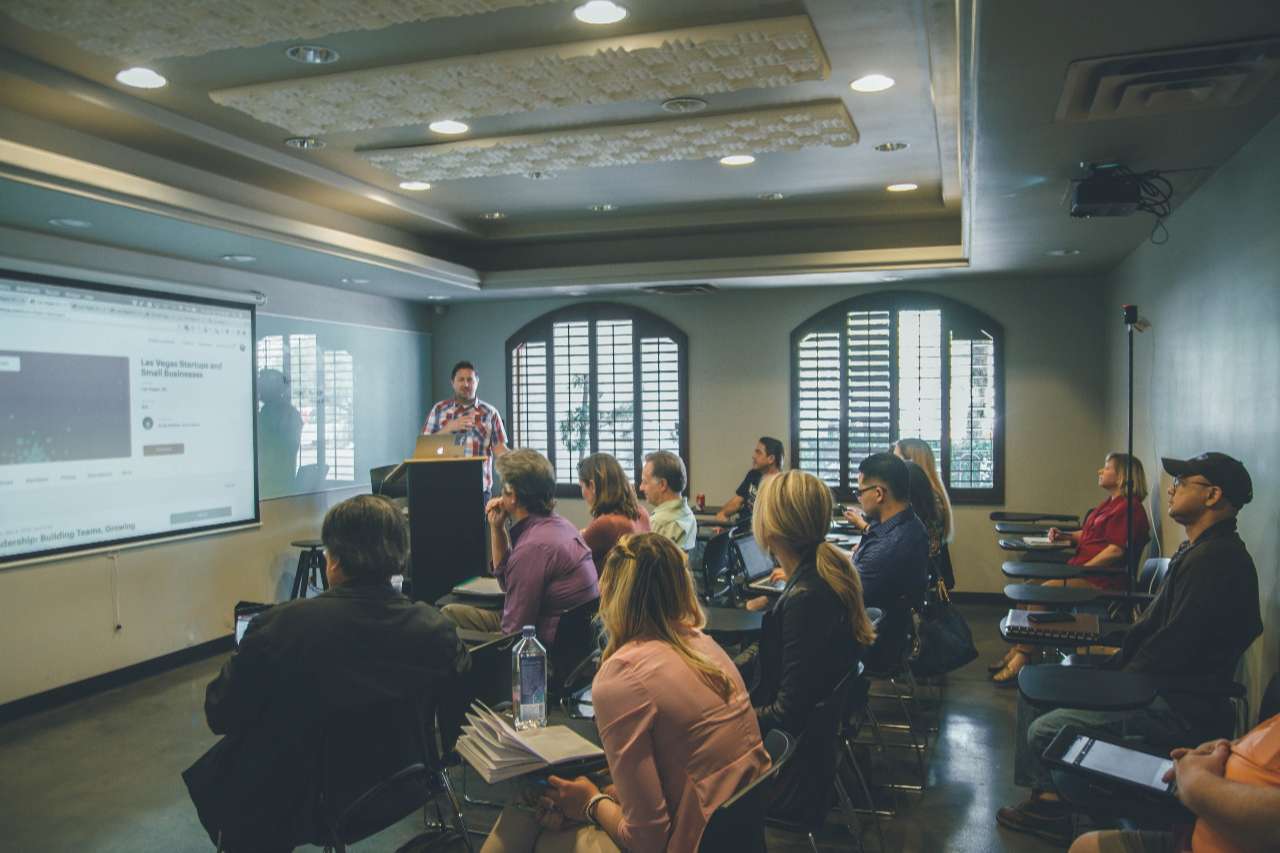4 Minutes of reading
The importance of face-to-face in the digital age
It seems astonishing at the time of digitalization to continue to promote face-to-face. However, face-to-face reinforces digital. Blended learning is the winning combo for effective learning.

In this digital age, going back to basics... a risky gamble?
But...who says we have to make a choice? Today, vocational training is more important than ever in companies, whatever their sector. Human resources departments are gradually being transformed in order to comply with the reform of 5 September 2018. Ultimately, each employee will have to undergo training that corresponds to his or her profile, profession and possible changes.
Today, there are a number of tools capable of making face-to-face training more fun and engaging, such as interactive training sessions.
how do you train your employees?
According to a study conducted by the Institute for Blended Learning in 2017, face-to-face learning was still the most popular, judged the most effective learning method by 21% of those questioned...yet this is 13% less than in 2014. While the taste for e-learning is on the rise, face-to-face learning is gradually being relegated to the background... wrongly so!
Why keep it face-to-face?
Some will say: face-to-face training is outdated, it doesn't make anyone want to train and it requires a lot of constraints (bringing in a trainer, finding a common schedule, moving to a specific place...).
In reality, to do away with face-to-face training is to do away with the act of training itself! The challenge should not be to replace learning formats entirely, but to manage classroom and e-learning together, increasing the commitment of the learners.
On the other hand: e-learning alone, while it allows for the acquisition of new knowledge, exercises, practical cases, quizzes and assessments, cannot fully train. Indeed, to be fully beneficial to the learner, a training course must include, in addition to the information/learning part, a simulation and encourage the confrontation of points of view with other learners.
This confrontation, known as socio-cognitive conflict, promotes productivity and, subsequently, learning. The percentage of correct solutions during a practical exercise, for example, is higher when a divergence is introduced within a group. This cognitive progress directly related to social peer interaction does not occur (or less) during individual work.

Today, there are a number of tools that can make face-to-face training more fun and engaging, such as interactive training. The era of the text overloaded PowerPoint is over: the idea is really to encourage exchange between the learners and the trainer himself. Gone is the era of horizontal learning, which places learners as passive observers. Instead, divide the session into several parts, so as not to tire and to diversify the content. Mix, for example, purely theoretical parts with games and exercises in groups, while remaining available to answer learners' questions and help them along the way.
What about e-learning?
Of course, it is difficult to miss out on e-learning modules: they are a significant time and cost saver for companies, and also allow the learner to free himself from the time and geographical constraints of face-to-face teaching.
Everything is done to adapt the training to the learner's schedule: training anywhere, anytime and in a few minutes has become a real credo for some people. However, be careful not to overuse these ultra-short formats, which do not go into the subjects in depth and certainly do not by themselves allow the development of real skills.
Nor should we neglect virtual classes, which are a way to combine the advantages of face-to-face, while staying at home. They allow you to benefit from direct interaction with the trainer via chat.
In addition, the possibility of varying the formats in the e-learning modules (videos, quizzes, etc.) is a real plus which, in addition to making the training more engaging, can really enrich the content of the training..
Blended learning: the PERFECT combot
It cannot be said often enough: blended learning is certainly the most effective learning format. The principle is simple: subtly mix face-to-face and e-learning formats to benefit from the advantages of both. Some training subjects are complicated or even impossible to digitize because they are complex and require a physical demonstration.
E-learning complements face-to-face training, and vice versa. The two must be thought out together and integrated simultaneously when drawing up the skills plan (hence the importance of choosing a tool that can manage both at the same time, without distinction).
TO CONCLUDE
- It is essential to keep the face-to-face in the training process ... but combining it with digital which has many qualities and continues to grow!
- There are now many methods to make face-to-face training more attractive. To hell with PowerPoint loaded with text and hours spent copying what the trainer dictates! From now on, face-to-face training must encourage exchange, role-playing and other practical exercises.
- Blended Learning is currently the most complete solution on the training market.

